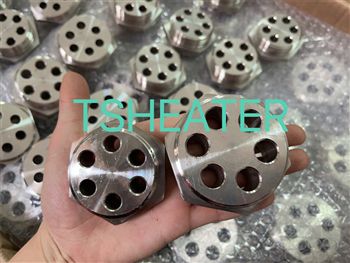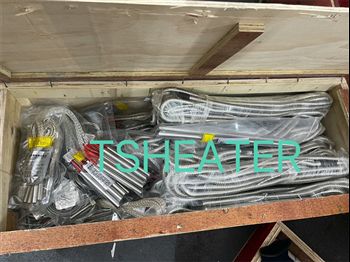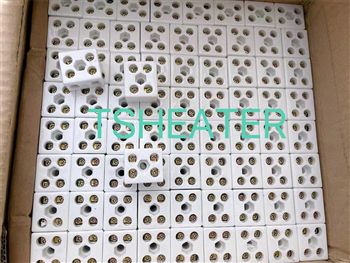
Nov 10 2022

Nov 15 2022

Nov 17 2022

Nov 18 2022
There are two main ways to heat the Tubular Heaters: 1. Direct heating (internal heating): by parallel application to the pipeline, straight-laid; the other is spiral, equidistant, and directly heated on the pipeline; 2 Indirect heating (far infrared heating): heating by means of a far infrared electric heating device. The two heating methods are described in detail separately.
Method 1: Direct heating (internal heating)
Direct heating is to heat the heat transfer oil by inserting the flanged tubular electric heating element inside the Tubular Heater into the reactor jacket in the Tubular Heater, and transferring the heat energy in the Tubular Heater to the chemical reactor in the internal heater of the Tubular Heater. Raw material; or directly insert the tubular electric heating element in the Tubular Heater into the reactor in the Tubular Heater or evenly distribute the electric heating tube around the wall of the Tubular Heater. This mode is called the internal heat of the duct heater. The internal heating of the Tubular Heater is fast and efficient.
The resistance wire of the pipe heater is made of nickel and chrome alloy and the temperature exceeds 800 °C. Because the power of the electric heater is relatively high, if the user neglects the safety, the fire of the Tubular Heater manufacturer may break out at any time. Factors that cause the electric heater to catch fire include: First, placing an energized electric heater on a combustible material or near a combustible material may result in a fire under long-term high temperature baking. Another reason is that the electric heater has no device plug and directly inserts the wire end into the socket, so it is easy to cause a short circuit and fire. Third, the plug of the electric heater was not unplugged when the user left. The time is too long, causing the electric heater to overheat, igniting nearby combustibles and forming a fire. Fourth, after repeated repairs, the resistance wire will continue to be used, which may cause a fire due to line overload.
Method 2: Indirect heating (far infrared heating)
Indirect heating has appeared in recent years. It is through the far-infrared electric heating equipment. The internal electric heater in the Tubular Heater covers the bottom of the reactor and the middle and lower parts of the Tubular Heater in the Tubular Heater. Contacted to heat, the far-infrared electric heating device of the Tubular Heater has a large heating area of the internal system of the Tubular Heater, so that the temperature of the Tubular Heater rises steadily and rapidly, the heat release of the Tubular Heater is uniform, and the temperature control of the Tubular Heater is convenient. The Tubular Heater can be controlled by the upper, middle and lower sections. The temperature of the tank wall in the Tubular Heater is easy to control. The Tubular Heater has no side effects on the fuel in the kettle, and the carbonization of the material in the Tubular Heater is not traced. The Tubular Heater runs without noise and pollution, and the Tubular Heater has the characteristics of long-lasting durability. The energy saving effect of the Tubular Heater is very obvious.
Therefore, during operation, inflammable and explosive materials should not be placed near the electric heater, and a certain safe distance needs to be maintained. The electric heater needs to be placed on a non-combustible material base that is not thermally conductive. It is necessary to meet the capacity requirements of the electric heater in order to safely cut off the flow of the heating wire. In any case, industrial electric heaters should be equipped with separate circuits.